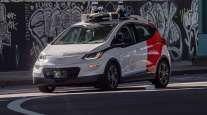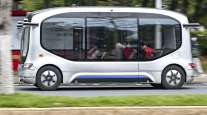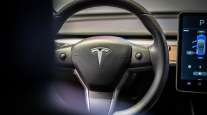State and Local Officials Respond to Federal Self-Driving Car Legislation

State and regional transportation officials largely praised the vote by the U.S. House of Representatives to ease the development of self-driving cars, and the technology associated with them, Sept. 6.
With that support, officials say they hope the federal government leaves ample room for state and local governments to regulate planning, licensing and revenue generation related to autonomous vehicles.
“I think that having federal leadership, both advancing the development of automated vehicles and insuring the safety of those vehicles, is very important,” said Thomas Bamonte, senior program manager for automated vehicles with the North Central Texas Council of Governments in Arlington, just outside Dallas.
“But I think it’s [also] important that we leave sufficient space for cities and regions to consider how best these vehicles are deployed in local particular settings,” he added. “We’re going to need flexibility to do things to accommodate, for example, low-speed shuttles on public streets.”
The House unanimously passed the “SELF DRIVE Act” in a voice vote Sept. 6, which would allow auto-makers to release up to 25,000 self-driving vehicles onto public roads without meeting existing auto safety standards within the first year, and gradually allows a total of 100,000 vehicles within three years.
Car companies must demonstrate that the self-driving cars are at least as safe as human-operated vehicles. States could still set rules on licensing, registration, safety inspections and insurance requirements — a similar regulatory arena states have always occupied.
State officials, and others watching the AV industry, welcomed the measure — which is expected to pass the Senate and receive the president’s signature — a sign self-driving technology should continue to progress.
“Based on what we have seen in the bills, we are very supportive,” said Kirk Steudle, director of the Michigan Department of Transportation. “That is mostly because it maintains the distinctive role of the federal and state and local governments.”
Michigan, home to a hotbed of autonomous vehicle testing, is set to be a leader in some of the public policy surrounding AV technology.
“Michigan has already taken the lead on bills signed in December 2016 that keep the auto state in the lead on allowing operations on public roadways and enabling industry,” Steudle added in an email.
Officials in other states at the forefront of developing testing and licensing applications for AVs say it’s still a little soon to know exactly what the SELF DRIVE Act will mean for future regulatory developments.
“We have not had a chance to read the bill yet, as it was late yesterday afternoon when notice of the decision came through,” said Thomas Martin, a management analyst with the Management Services and Programs Division at the Nevada Department of Motor Vehicles.
The House move was likely more of an assertion by the federal government to continue its role in regulating the design and safety of cars, while still leaving licensing of drivers, insurance requirements and traffic laws in the hands of the states, say researchers.
“The states have been involved with this for several years, trying to rustle with it, and there hasn’t been a lot out of the federal level,” said Ginger Goodin, a senior researcher at the Texas Transportation Institute at Texas A&M University.
“So what we saw was in the absence of any federal activity, on their traditional role, which is setting vehicle safety standards, states were beginning to try to figure out, from their perspective, ‘how do we allow these vehicles to operate safely on our roadways?’” she added. “And so over the past several years we’ve seen states come forward with legislation, come back and revise that legislation; new states getting into it, and passing their own legislation, with some variations across the country.
“I think they just wanted to say, we don’t want states getting too far into our business which is defining the design, and construction and performance of the technology itself,” Goodin said.
Some 19 states have passed legislation relating to autonomous vehicles — many starting small by defining terms like “automated driving system,” “dynamic driving task” or “autonomous vehicle.” Additionally, governors from four states have issued executive orders creating councils and working groups of stakeholders and public officials dedicated to looking at how their states should proceed.
Automakers like General Motors and Ford have been at work on self-driving car technology, as well as companies like Apple and Alphabet’s AV unit, known as Waymo. Some estimates would place self-driving cars on the streets as soon as 2020.
In the coming years watch for autonomous vehicles to play a larger role in discussions by state and local authorities when it comes to strategic transportation planning, vehicle fee structures and other concerns, said Bamonte.
“If we have unoccupied vehicles circulating and congregating, there may be traffic implications that we need the tools to deal with,” he remarked.
“So, it’s certainly a welcome step that the federal government and the Congress is focused, and sees the importance of this technology,” said Bamonte. “But in the end, I think it will truly be a partnership between the federal government and state and local governments to deliver and improve transportation systems.”
Distributed by Tribune Content Agency, LLC




